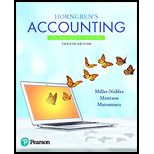
Introduction:
Income Statement: The income statement also called a
Statement of Owner’s Equity: The statement of owner’s equity is that statement which shows the increase or decrease in equity shareholders fund within an accounting period. This is increased by profits/ gains to shareholders during the year and the amount distributed to shareholders are shown as a deduction.
Balance Sheet: The balance sheet is the position of assets and liabilities of the company at the end of the financial year. It includes all the assets, owner’s share named as equity shareholder and all debts named as liabilities of the company. Its equation is “Assets = Liabilities + Equity Shareholders”.
Cash Flow Statement: Cash flow statement is that statement which shows the inflow and outflow of cash within a sepcific period of time. It is shown in three different categories which are cash flow from operating activities, cash flow from investing activities and cash flow from financing activities.
To calculate: The income statement, statement of owner’s equity, balance sheet, and statement of cash flows for the company.
Want to see the full answer?
Check out a sample textbook solution
Chapter 1 Solutions
Horngren's Accounting (12th Edition)
- Please help me solve this general accounting problem with the correct financial process.arrow_forwardPlease provide the accurate answer to this financial accounting problem using valid techniques.arrow_forwardI am looking for the correct answer to this general accounting question with appropriate explanations.arrow_forward
- Aihua Manufacturing Inc. has two divisions. Division A has a profit of $225,000 on sales of $4,500,000. Division B is only able to make $78,000 on sales of $650,000. Based on the profit margins (returns on sales), which division is superior?arrow_forwardTylenol Manufacturing produces product XZ with the following monthly data: direct materials $34 per unit, direct labor $27 per unit, variable manufacturing overhead $15 per unit, fixed manufacturing overhead totaling $562,000, and variable selling expenses of $8 per unit. If Tylenol produced 7,800 units last month with no beginning or ending inventories, what would be the total product cost under absorption costing?arrow_forwardWhat was Michael Jones's beginning capital balance?arrow_forward
- Can you help me solve this general accounting problem with the correct methodology?arrow_forwardCan you solve this financial accounting problem using accurate calculation methods?arrow_forwardAt the beginning of the year, Downtown Athletic had an inventory of $200,000. During the year, the company purchased goods costing $800,000. If Downtown Athletic reported ending inventory of$300,000 and sales of $1,050,000, their cost of goods sold and gross profit rate must be ..........................................arrow_forward

 AccountingAccountingISBN:9781337272094Author:WARREN, Carl S., Reeve, James M., Duchac, Jonathan E.Publisher:Cengage Learning,
AccountingAccountingISBN:9781337272094Author:WARREN, Carl S., Reeve, James M., Duchac, Jonathan E.Publisher:Cengage Learning, Accounting Information SystemsAccountingISBN:9781337619202Author:Hall, James A.Publisher:Cengage Learning,
Accounting Information SystemsAccountingISBN:9781337619202Author:Hall, James A.Publisher:Cengage Learning, Horngren's Cost Accounting: A Managerial Emphasis...AccountingISBN:9780134475585Author:Srikant M. Datar, Madhav V. RajanPublisher:PEARSON
Horngren's Cost Accounting: A Managerial Emphasis...AccountingISBN:9780134475585Author:Srikant M. Datar, Madhav V. RajanPublisher:PEARSON Intermediate AccountingAccountingISBN:9781259722660Author:J. David Spiceland, Mark W. Nelson, Wayne M ThomasPublisher:McGraw-Hill Education
Intermediate AccountingAccountingISBN:9781259722660Author:J. David Spiceland, Mark W. Nelson, Wayne M ThomasPublisher:McGraw-Hill Education Financial and Managerial AccountingAccountingISBN:9781259726705Author:John J Wild, Ken W. Shaw, Barbara Chiappetta Fundamental Accounting PrinciplesPublisher:McGraw-Hill Education
Financial and Managerial AccountingAccountingISBN:9781259726705Author:John J Wild, Ken W. Shaw, Barbara Chiappetta Fundamental Accounting PrinciplesPublisher:McGraw-Hill Education





